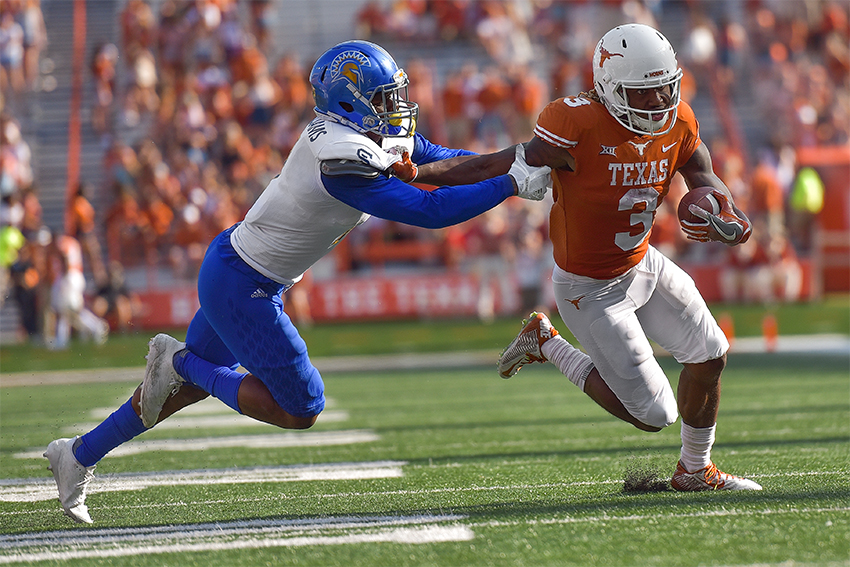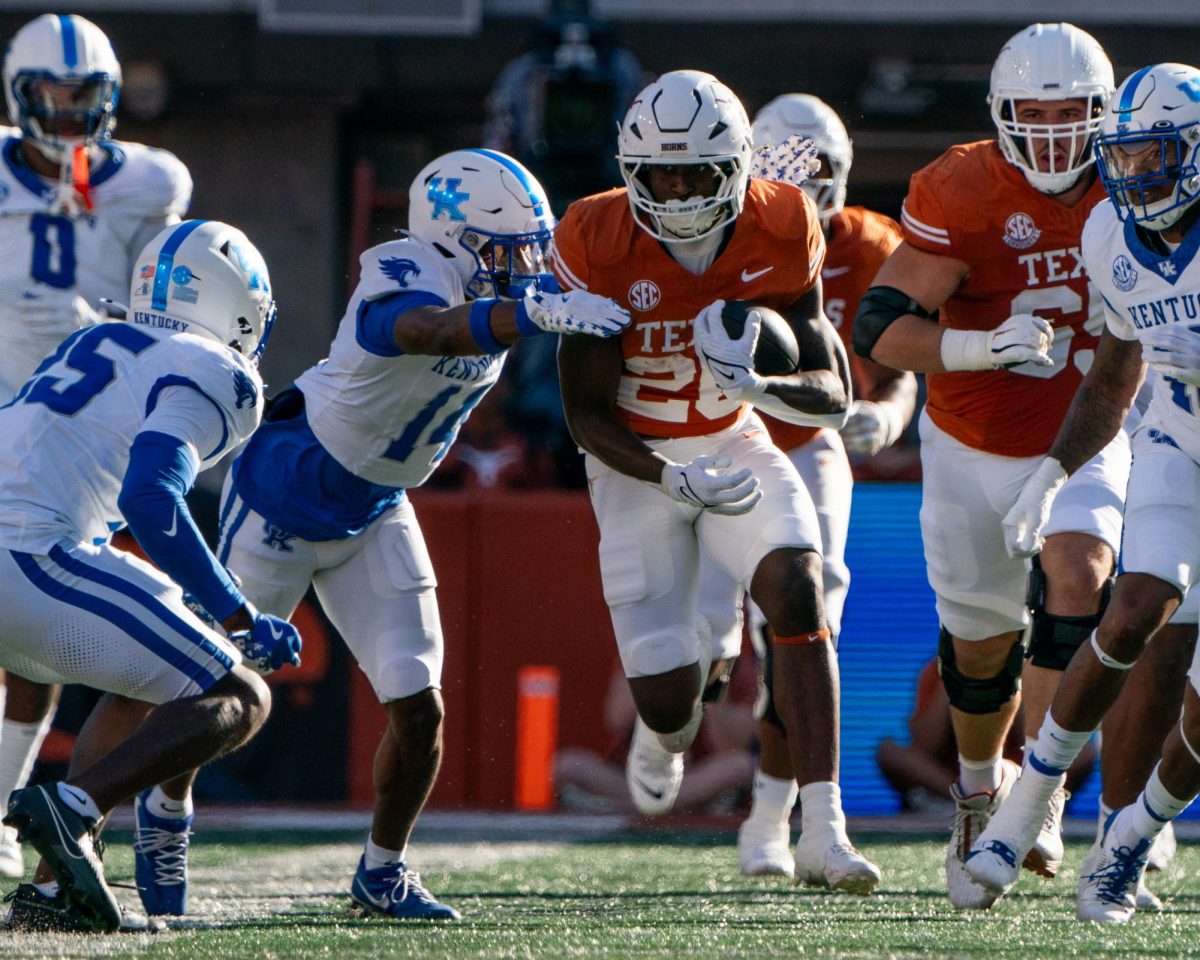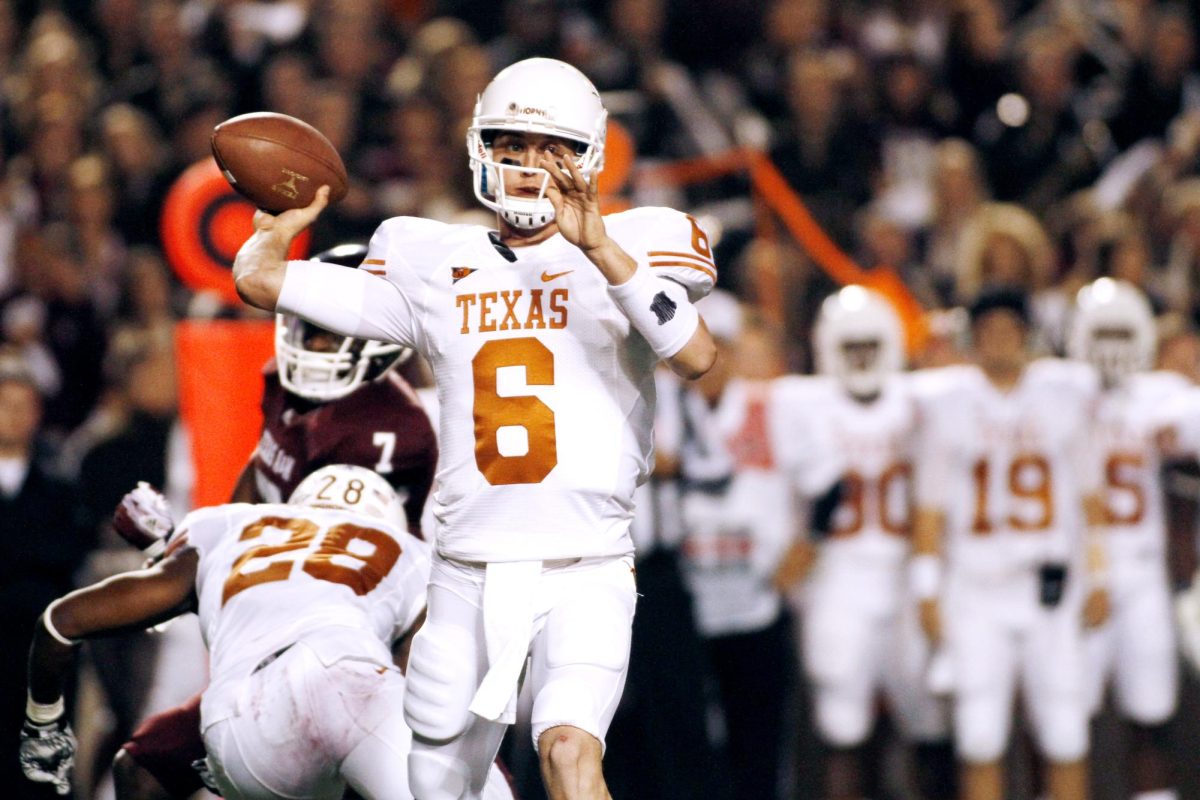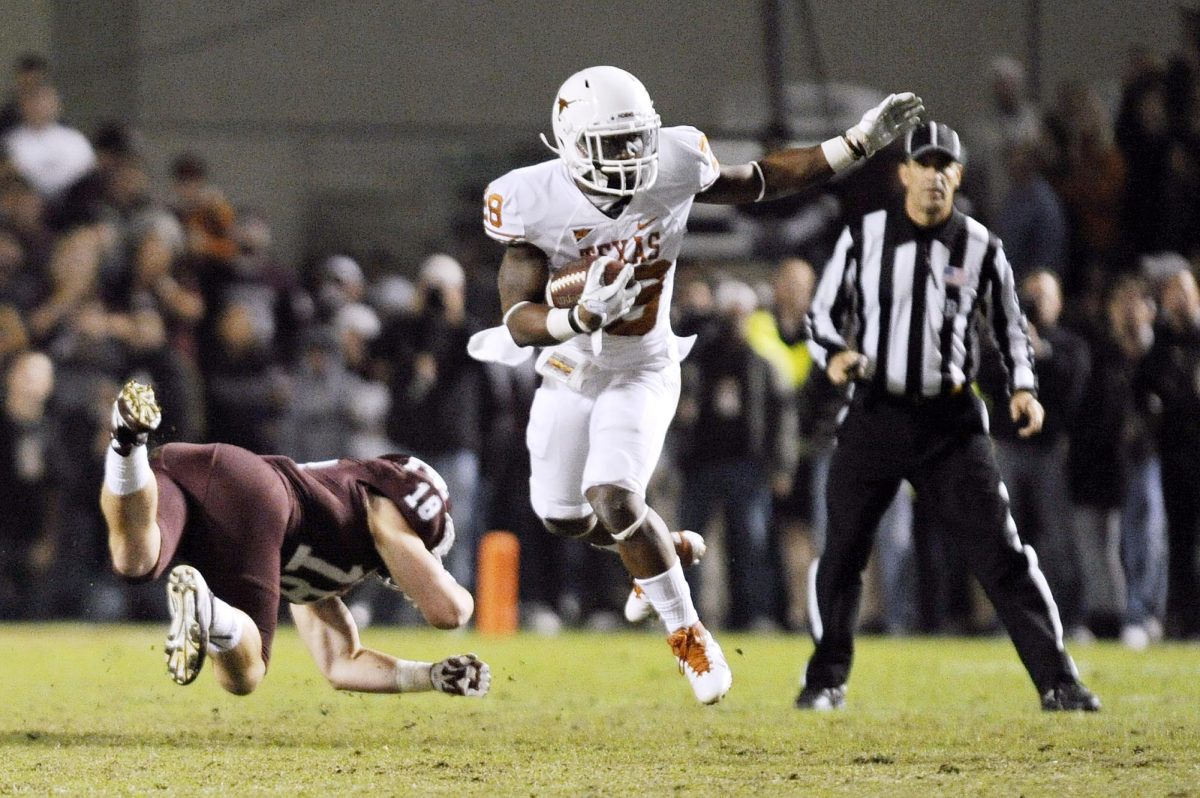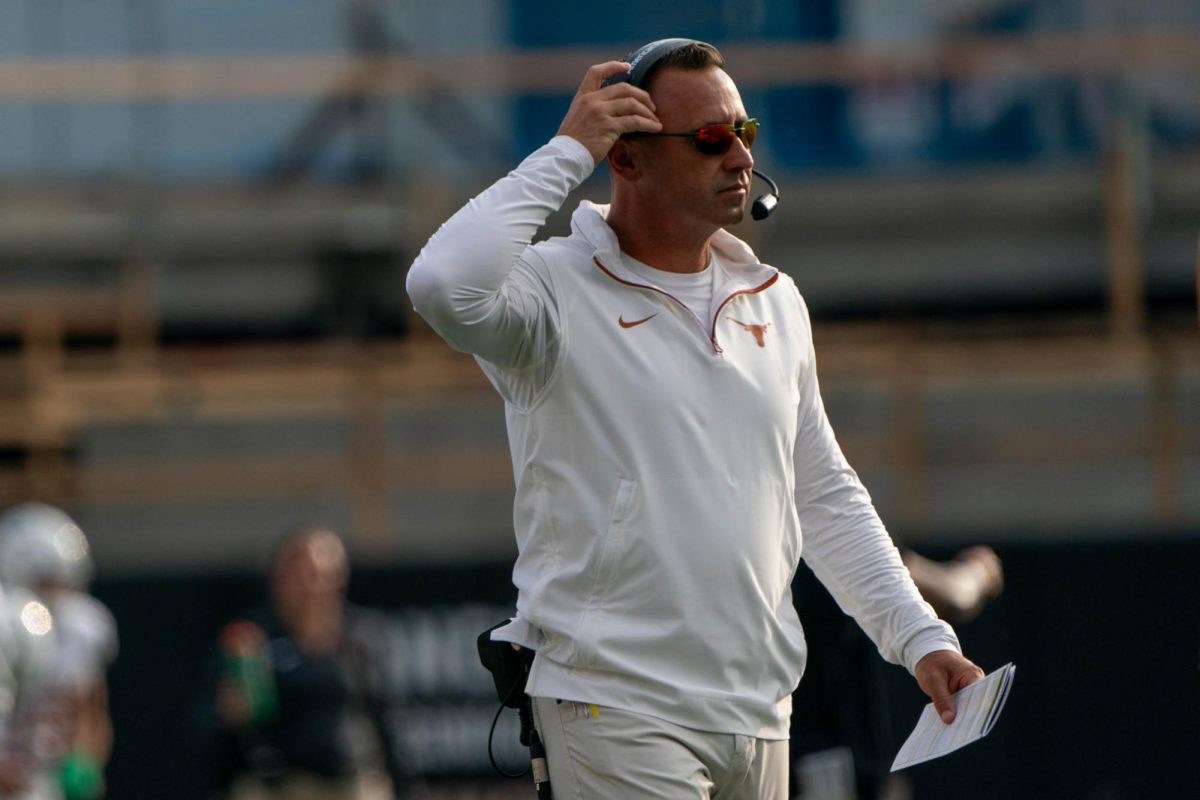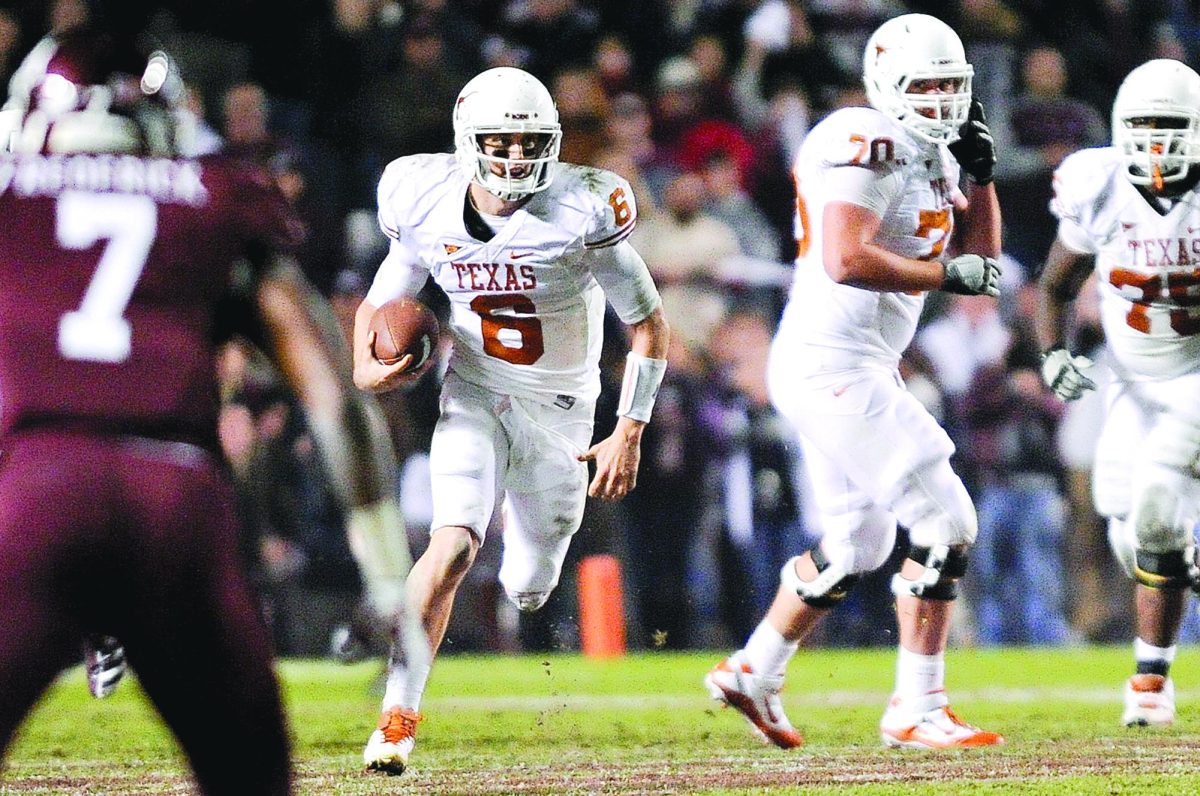As quarterback Sam Ehlinger rolled to his left on Texas’ final play against now No. 11 Oklahoma State on Saturday, he had three receivers to find in the endzone. The freshman could have flung the ball to senior Lorenzo Joe or junior Jerrod Heard on the left side of the formation, or hauled a prayer to sophomore Devin Duvernay streaking across the back of the endzone from the right sideline.
Ehlinger ultimately chose none of the three options, instead floating an ill-advised interception to an Oklahoma State defender, ending the contest 13-10 in overtime. But as puzzling as Ehlinger’s decision-making was in the redzone, equally as perplexing were his options at wideout before the play started. The Longhorns’ catch leader Reggie Hemphill-Mapps stood on the sidelines as the ball was snapped, as did 6-foot-6-inch standout Collin Johnson.
With third down and the game on the line, the Longhorn offense attacked the endzone with its two top targets out of action. Joe, Heard and Duvernay failed to create separation, and seconds later the Longhorns dropped under .500 for the second time this season, losing their second-straight contest against a ranked opponent.
The overtime blunder wasn’t an isolated incident. As the Longhorns head into Week 9 with goals of a winning season now seriously in doubt, questions persist regarding the offense’s depth chart — starting at wide receiver.
While just a sophomore, Johnson has established himself as one of the more imposing wide receivers in the Big 12. He uses his large frame to sky above opposing defenders for contested catches and isn’t afraid to go over the middle. Enter the red zone, and there are few targets more dangerous for opposing defenses. After tallying 125 yards in the season opener against Maryland and 191 yards two weeks later against USC, it looked as though Texas would target Johnson early and often each week.
But over the past two games, that’s been far from the case. The San Jose, California native compiled just five receptions over the past two weeks, and now, he sits below senior Dorian Leonard — who has 11 catches this season — on the depth chart.
“Dorian practiced and played better in the Oklahoma game, and we’ll evaluate how they played and practiced,” head coach Tom Herman said. “ Each game and each week of practice is an independent event.”
Leonard is a quality contributor, and a net plus to the Longhorn receiving corps. However, it doesn’t take a seasoned offensive coordinator to see the boost Johnson
provides Texas’ offense. Keeping him on the sideline, especially in red zone situations, significantly hampers the Longhorn attack.
Then there’s the case of senior Armanti Foreman. The Longhorns’ leading receiver in 2016, Foreman has been relegated to the bench for much of this season, missing each of the past two games. And not due to injury, either. Herman cited poor practices as the reason for Foreman’s benching, stressing practice’s importance in determining who sees the field each Saturday.
“(Foreman’s) got to practice better and play better than Jerrod (Heard) and Reggie (Hemphill-Mapps), just like anywhere,” Herman said. “At certain positions, you need to prod guys to go a little bit because there may not be as much competition, but at (wide receiver) you’ve got to go. It’s extremely competitive.”
After registering just 13 points against Oklahoma State, it’s now clear that the Longhorns need to revitalize their offense. But benching two of the team’s most potent weapons is far from the answer. To keep track with opposing Big 12 offenses in the season’s final five weeks, Herman must look past Texas’ practice bubble and get his playmakers onto the field when Texas’ offense needs them most.

